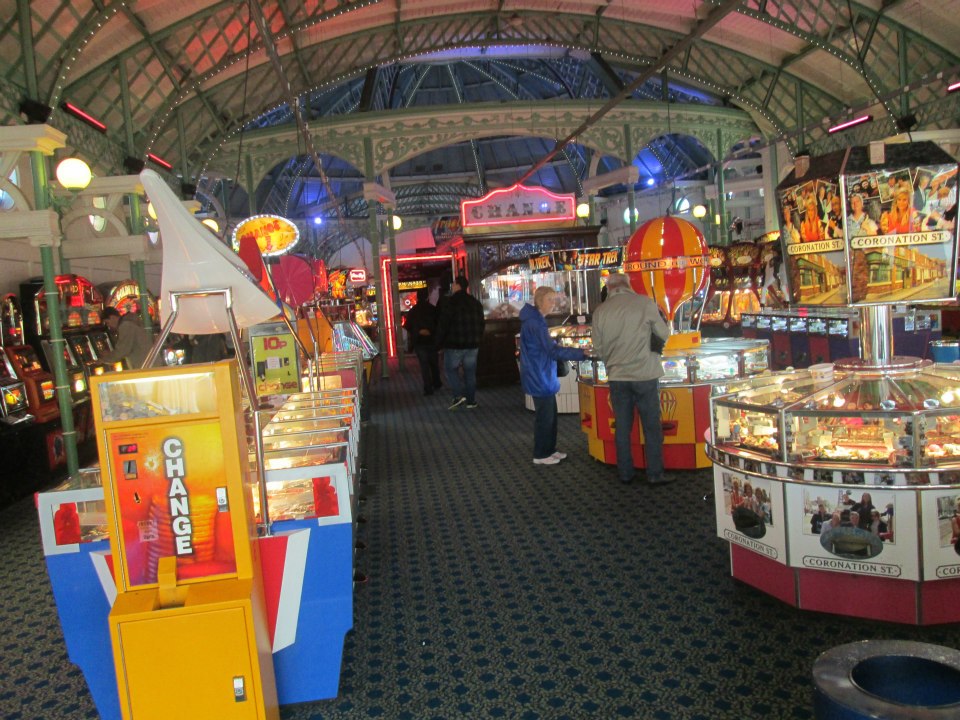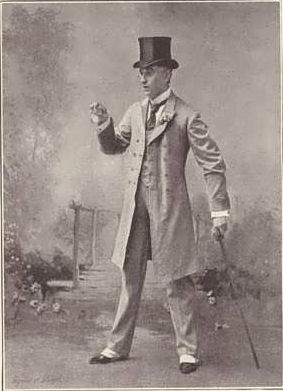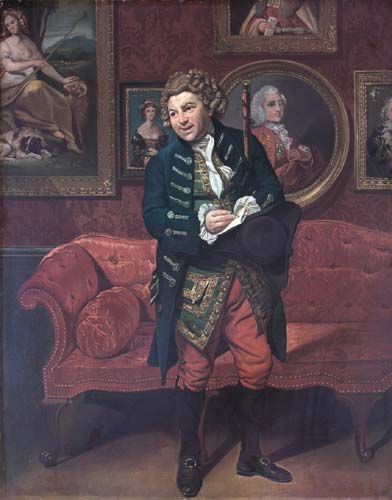|
Marie George
Marie George (born Clara Marie Georg; 25 June 1876 – 15 July 1955) was an American actress, singer and stage beauty who had a successful career first in New York City and later in London, England during the Edwardian era. Early life Marie George was born in New York in 25 June 1876 as Clara Marie Georg to German-American parents. On going on the stage she adopted the Anglisized version of her surname. Stage career On moving with her husband to London she played Dolly Twinkle in ''The Casino Girl'' at the Shaftesbury Theatre (1900), was in the American musical comedy ''The Belle of Bohemia'' at the Apollo Theatre (1901) and played Cornelia in ''The White Chrysanthemum'' at the Criterion Theatre (1905). For a number of years she was a regular in the annual pantomime at the Theatre Royal, Drury Lane including: Gretchen in ''Mother Goose'' (1902) opposite Dan Leno; Principal Girl in ''Humpty Dumpty'' (1903) during which she was taken ill and was replaced by Mabel Love; Cupi ... [...More Info...] [...Related Items...] OR: [Wikipedia] [Google] [Baidu] |
New York City
New York, often called New York City or NYC, is the List of United States cities by population, most populous city in the United States. With a 2020 population of 8,804,190 distributed over , New York City is also the List of United States cities by population density, most densely populated major city in the United States, and is more than twice as populous as second-place Los Angeles. New York City lies at the southern tip of New York (state), New York State, and constitutes the geographical and demographic center of both the Northeast megalopolis and the New York metropolitan area, the largest metropolitan area in the world by urban area, urban landmass. With over 20.1 million people in its metropolitan statistical area and 23.5 million in its combined statistical area as of 2020, New York is one of the world's most populous Megacity, megacities, and over 58 million people live within of the city. New York City is a global city, global Culture of New ... [...More Info...] [...Related Items...] OR: [Wikipedia] [Google] [Baidu] |
Courtice Pounds
Charles Courtice Pounds (30 May 1861 Gänzl, Kurt"Pounds of Pyes, or mea culpa No. 2" Kurt Gänzl's blog, 4 May 2018. Note that hibirth registrationis in central London in the third quarter of 1861 – 21 December 1927), better known by the stage name Courtice Pounds, was an English singer and actor known for his performances in the tenor roles of the Savoy Operas with the D'Oyly Carte Opera Company and his later roles in Shakespeare plays and Edwardian musical comedies. As a young member of D'Oyly Carte, Pounds played tenor leads in the Gilbert and Sullivan operas in New York and on tour in Britain and continental Europe from 1881 to 1887. After being promoted to principal tenor at the Savoy Theatre, he created the principal tenor roles in ''The Yeomen of the Guard'' (1888), ''The Gondoliers'' (1889), '' The Nautch Girl'' (1891) and ''Haddon Hall'' (1892), and played other principal roles. After leaving D'Oyly Carte in 1895, Pounds became a prominent performer during the tra ... [...More Info...] [...Related Items...] OR: [Wikipedia] [Google] [Baidu] |
People From New York (state)
A person ( : people) is a being that has certain capacities or attributes such as reason, morality, consciousness or self-consciousness, and being a part of a culturally established form of social relations such as kinship, ownership of property, or legal responsibility. The defining features of personhood and, consequently, what makes a person count as a person, differ widely among cultures and contexts. In addition to the question of personhood, of what makes a being count as a person to begin with, there are further questions about personal identity and self: both about what makes any particular person that particular person instead of another, and about what makes a person at one time the same person as they were or will be at another time despite any intervening changes. The plural form "people" is often used to refer to an entire nation or ethnic group (as in "a people"), and this was the original meaning of the word; it subsequently acquired its use as a plural form of per ... [...More Info...] [...Related Items...] OR: [Wikipedia] [Google] [Baidu] |
1975 Deaths
It was also declared the ''International Women's Year'' by the United Nations and the European Architectural Heritage Year by the Council of Europe. Events January * January 1 - Watergate scandal (United States): John N. Mitchell, H. R. Haldeman and John Ehrlichman are found guilty of the Watergate cover-up. * January 2 ** The Federal Rules of Evidence are approved by the United States Congress. ** Bangladesh revolutionary leader Siraj Sikder is killed by police while in custody. ** A bomb blast at Samastipur, Bihar, India, fatally wounds Lalit Narayan Mishra, Minister of Railways. * January 5 – Tasman Bridge disaster: The Tasman Bridge in Hobart, Tasmania, Australia, is struck by the bulk ore carrier , killing 12 people. * January 7 – OPEC agrees to raise crude oil prices by 10%. * January 10–February 9 – The flight of ''Soyuz 17'' with the crew of Georgy Grechko and Aleksei Gubarev aboard the ''Salyut 4'' space station. * January 15 – Alvor Agreement: Portuga ... [...More Info...] [...Related Items...] OR: [Wikipedia] [Google] [Baidu] |
1877 Births
Events January–March * January 1 – Queen Victoria is proclaimed ''Empress of India'' by the ''Royal Titles Act 1876'', introduced by Benjamin Disraeli, the Prime Minister of the United Kingdom . * January 8 – Great Sioux War of 1876 – Battle of Wolf Mountain: Crazy Horse and his warriors fight their last battle with the United States Cavalry in Montana. * January 20 – The Conference of Constantinople ends, with Ottoman Turkey rejecting proposals of internal reform and Balkan provisions. * January 29 – The Satsuma Rebellion, a revolt of disaffected samurai in Japan, breaks out against the new imperial government; it lasts until September, when it is crushed by a professionally led army of draftees. * February 17 – Major General Charles George Gordon of the British Army is appointed Governor-General of the Sudan. * March – ''The Nineteenth Century (periodical), The Nineteenth Century'' magazine is founded in London. * Marc ... [...More Info...] [...Related Items...] OR: [Wikipedia] [Google] [Baidu] |
National Portrait Gallery, London
The National Portrait Gallery (NPG) is an art gallery in London housing a collection of portraits of historically important and famous British people. It was arguably the first national public gallery dedicated to portraits in the world when it opened in 1856. The gallery moved in 1896 to its current site at St Martin's Place, off Trafalgar Square, and adjoining the National Gallery (London), National Gallery. It has been expanded twice since then. The National Portrait Gallery also has regional outposts at Beningbrough Hall in Yorkshire and Montacute House in Somerset. It is unconnected to the Scottish National Portrait Gallery in Edinburgh, with which its remit overlaps. The gallery is a non-departmental public body sponsored by the Department for Digital, Culture, Media and Sport. Collection The gallery houses portraits of historically important and famous British people, selected on the basis of the significance of the sitter, not that of the artist. The collection includes ... [...More Info...] [...Related Items...] OR: [Wikipedia] [Google] [Baidu] |
Brighton Palace Pier
The Brighton Palace Pier, commonly known as Brighton Pier or the Palace Pier, is a Listed buildings in the United Kingdom, Grade II* listed Pier#Pleasure piers, pleasure pier in Brighton, England, located in the city centre opposite the Old Steine. Established in 1899, it was the third pier to be constructed in Brighton after the Royal Suspension Chain Pier and the West Pier, but is now the only one still in operation. It is managed and operated by the Eclectic Bar Group. The Palace Pier was intended as a replacement for the Chain Pier, which collapsed in 1896 during construction of the new pier. It quickly became popular, and had become a frequently-visited theatre and entertainment venue by 1911. Aside from closures owing to war, it continued to hold regular entertainment up to the 1970s. The theatre was damaged in 1973 and following a buy-out was demolished in 1986, changing the pier's character from seaside entertainment to an amusement park, with various fairground rides a ... [...More Info...] [...Related Items...] OR: [Wikipedia] [Google] [Baidu] |
Herbert Sparling
Herbert Sparling (1864–1944) was a British comedy and musical theatre actor and director. In 1889 Sparling was sued for breach of contract at Brompton County Court by the "dramatic author" Henry Plunkett Gratton (1808–1889), who alleged that in 1887 he and Sparling had made an agreement that Gratton would rewrite a drama for Sparling in return for which he would receive periodic payments from Sparling. When asked for the second payment Sparling made various excuses and quit his lodgings on The Strand. The outcome was that Gratton was awarded £10 for the work he had already done. Sparling appeared as Dudley Harcourt in ''My Sweetheart'' (1891) at the Vaudeville Theatre; Luigi Di Volpa in F. C. Burnand's ''Private Enquiry'' (1891) at the Strand Theatre; Lyngstrand in Ibsen's ''The Lady from the Sea'' (1891) at Terry's Theatre; Josiah Higgins in ''Morocco Bound'' (1893); Sir Wormwood Scrubs in Howard Talbot's comic opera ''Wapping Old Stairs'' (1894); as Lord Lavender in ' ... [...More Info...] [...Related Items...] OR: [Wikipedia] [Google] [Baidu] |
Prince Of Wales Theatre
The Prince of Wales Theatre is a West End theatre in Coventry Street, near Leicester Square in London. It was established in 1884 and rebuilt in 1937, and extensively refurbished in 2004 by Sir Cameron Mackintosh, its current owner. The theatre should not be confused with the former Scala Theatre in London that was known as the ''Prince of Wales Royal Theatre'' or ''Prince of Wales's Theatre'' from 1865 until its demolition in 1903. History Phipps' theatre The first theatre on the site opened in January 1884 when Charles J. Phipps, C.J. Phipps built the Prince's Theatre for actor-manager Edgar Bruce. It was a traditional three-tier theatre, seating just over 1,000 people. The theatre was renamed the Prince of Wales Theatre in 1886 after the future Edward VII of the United Kingdom, Edward VII. Located between Piccadilly Circus and Leicester Square, the theatre was favourably situated to attract theatregoers. The first production in the theatre was an 1884 revival of W. S. ... [...More Info...] [...Related Items...] OR: [Wikipedia] [Google] [Baidu] |
A Chinese Honeymoon
''A Chinese Honeymoon'' is a musical comedy in two acts by George Dance, with music by Howard Talbot and additional music by Ivan Caryll and others, and additional lyrics by Harry Greenbank and others. One song that originated in the show was "Mister Dooley" which became famously associated with '' The Wizard of Oz'' for decades, when John Slavin, in the title role, interpolated the song for much of the first year of its run. The piece opened at the Theatre Royal in Hanley, England on 16 October 1899 and then toured extensively. After that, it played at the Royal Strand Theatre in London, managed by Frank Curzon, opening on 5 October 1901 for an astonishing run of 1,075 performances. It also played at the Casino Theatre, in New York, opening on 2 June 1902 for a run of 376 performances. In London, Lily Elsie took over the role of Princess Soo-Soo from Beatrice Edwards in early 1903 and was in turn succeeded by Kate Cutler. It also starred Louie Freear, and Arthur Williams to ... [...More Info...] [...Related Items...] OR: [Wikipedia] [Google] [Baidu] |
Grand Theatre, Leeds
The Grand Theatre, also known as Leeds Grand Theatre and Leeds Grand Theatre and Opera House, is a theatre and opera house in Briggate, Leeds, West Yorkshire, England. It seats approximately 1,500 people. Building It was designed by James Robinson Watson, chief assistant in the office of Leeds-based architect George Corson, and opened on 18 November 1878. It was built as a complex in three parts: the theatre, a set of six shops and Assembly Rooms, all facing onto New Briggate, in High Victorian style of red brick with stone dressings and a slate roof, the whole being a Grade II* listed building. The exterior is in a mixture of Romanesque and Scottish baronial styles, and the interior has such Gothic motifs as fan-vaulting and clustered columns. The auditorium and assembly room ceilings are by John Wormald Appleyard. History The Assembly Rooms were modified to create a cinema, which opened in 1907 as the Assembly Rooms Cinema, the name being changed to Plaza in 1958. Th ... [...More Info...] [...Related Items...] OR: [Wikipedia] [Google] [Baidu] |



_1938.jpg)





.jpg)
